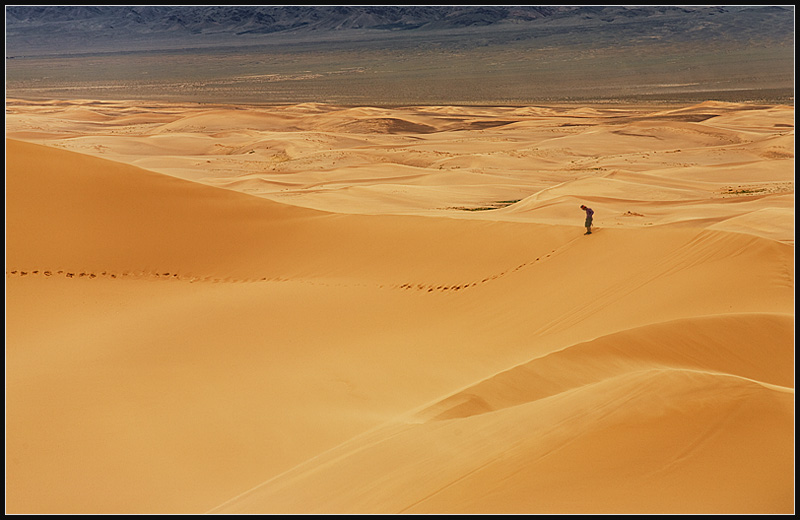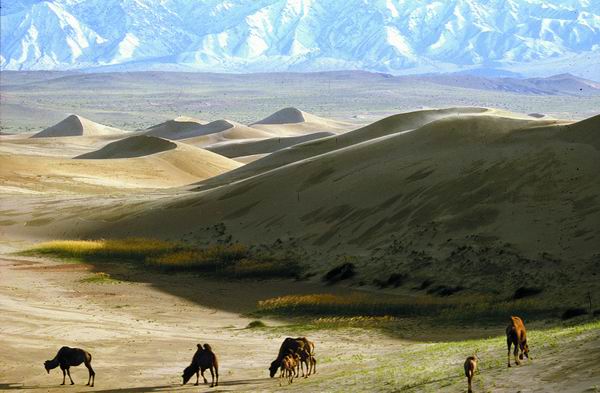The Gobi is a large desert region in Asia. It covers parts of northern and northwestern China, and of southern Mongolia. The Gobi is most notable in history as part of the great Mongol Empire, and as the location of several important cities along the Silk Road. The Gobi measures over 1,610 km from southwest to northeast and 800 km from north to south. The desert is widest in the west, along the line joining the Lake Bosten and the Lop Nor (87°-89° east). It occupies an arc of land 1,295,000 km2 in area as of 2007, making it fifth largest in the world and Asia's largest. Much of the Gobi is not sandy but is covered with bare rock. The Gobi is a cold desert, and it is not uncommon to see frost and occasionally snow on its dunes. The climate of the Gobi is one of great extremes, combined with rapid changes of temperature, not only through the year but even within 24 hours, by as much as 35 °C (95 °F). The Gobi Desert is the source of many important fossil finds,including the first dinosaur eggs.
Image of Gobi Desert





No comments:
Post a Comment